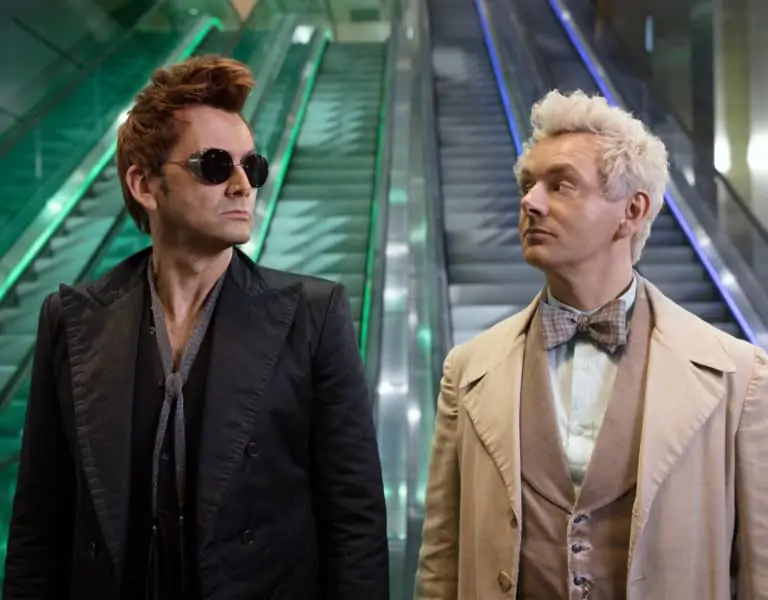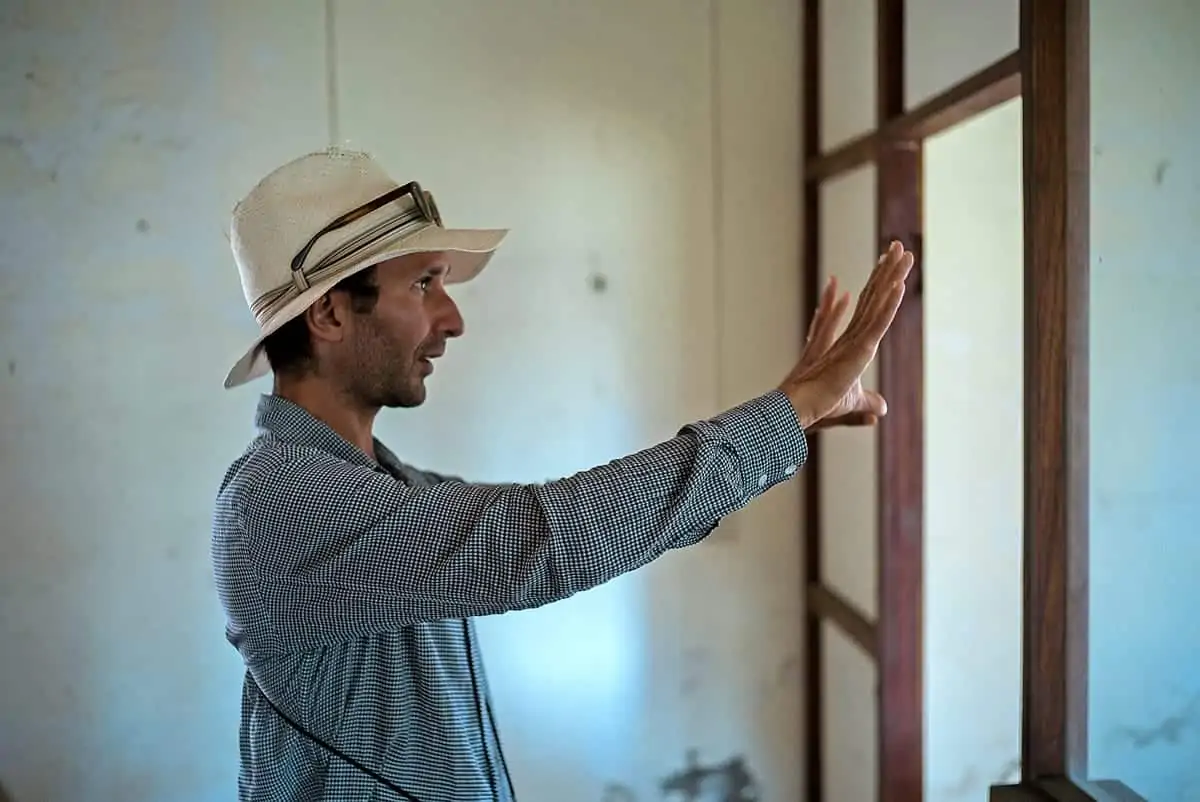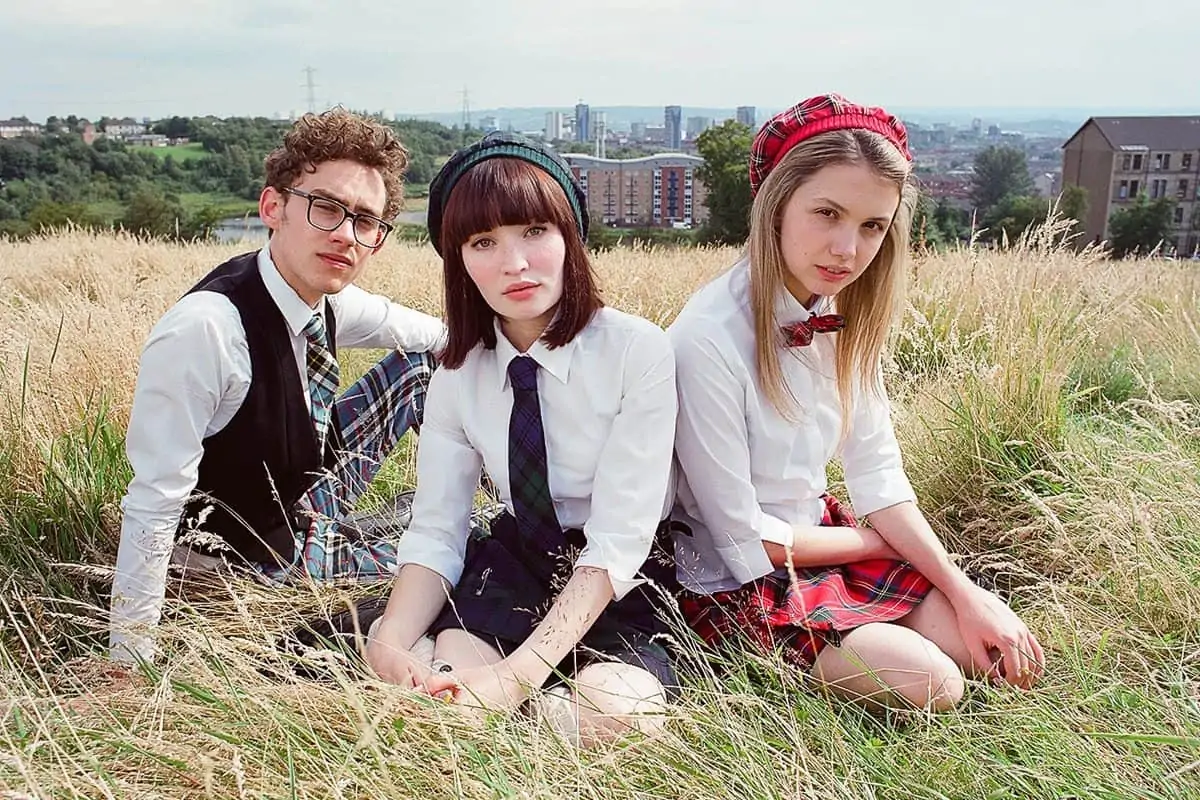Candle Light
Gavin Finney BSC / Wolf Hall

Candle Light
Gavin Finney BSC / Wolf Hall
Recreating an historical period for feature films and television drama is often a balance between authenticity and practicality. Wolf Hall, which starts in January on BBC Two, is rooted in early 16th century England by both its story of the power-play at the court of King Henry VIII, and the backdrop of how people lived at the time amid the heritage buildings where it all took place.
To recreate this as closely as possible, director of photography Gavin Finney BSC harnessed 21st century camera and lens technology to allow the candlelit world of those dark and threatening times shine through.
Based on the award-winning novel by Hilary Mantel, Wolf Hall charts the rise to power of Thomas Cromwell, the son of a blacksmith who entered the service of Cardinal Wolsey, became an MP and then close adviser to Henry VIII at the time of the monarch's divorce from Catherine of Aragon, marriage to Anne Boleyn and her subsequent fall and execution. As directed by Peter Kosminsky, from a script by Peter Straughan, the six-part TV adaptation is more documentary in style, and political in tone, than other recent historical sagas looking at the same period.
When the offer to work on the production came through from his agent, Finney says he had no hesitation in accepting, for a number of reasons: "As soon as I heard about Wolf Hall I said yes, absolutely. Peter Kosminsky was another big tick – he's a top director and he was going to be doing all six parts. They also wanted one DP for the whole lot, which was a big plus, as it’s less satisfying starting something and then handing it over."
Wolf Hall was Finney's first experience of working with Kosminsky, who has built up a team of regular collaborators, including editor David Blackmore and composer Debbie Wiseman, both of whom were involved this time. David Higgs BSC also worked on several of the director's recent films and mini-series, including The Promise (2011), Britz (2007) and The Project (2002), and Kosminsky wanted Finney to continue in a similar operational style.
"One of the first things Peter said was 'I really like my DPs to operate'," Finney recalls. "I thought brilliant, I love operating. He also wanted this to be a single camera show and for it to be 100 percent handheld. I was thinking '85 days of handheld, probably with a heavy camera, that's going to be interesting'. The actual concept was brilliant, a really good idea."

Handheld camera is a feature of Kosminsky's drama work, influenced by his late 1980s documentaries such as The Falklands War: The Untold Story and Afghansti. This gives an immediacy and realism to his storytelling, which is true for Wolf Hall. It also allows the TV version to maintain the focus of Mantel's novel by staying close to Cromwell without the need for voice-over narration to convey his thoughts.
Cromwell is played by Mark Rylance, supported by a cast of equally big and impressive names: Damian Lewis as Henry, Claire Foy (Anne Boleyn), Jonathan Pryce (Wolsey), Bernard Hill (Norfolk), Anton Lesser (Sir Thomas More) and Joanne Whalley (Catherine of Aragon).
The combination of Rylance and the shooting style, has, says Finney, stayed true to the novel by seeing everything from Cromwell's perspective. "I was always with Cromwell, two or three feet away, so we don't see something until he sees it. In the whole six episodes there isn't a scene without Cromwell in it. We don't go off and see Henry's court or Anne Boleyn. We only see Anne or Henry if Cromwell happens to be in the room. Peter Straughan distilled the book brilliantly, leaving a lot of room for the actors to fill in the gaps and bring it to life. All Mark Rylance has to do is think and the camera sees it. You don't need a voiceover for the interior dialogue, or to be more wordy in explaining things, you just look at him."
Wolf Hall is Kosminsky's first digital production, shot on an ARRI Alexa, which Finney says weighs between 32 and 40lbs with lens and all accessories: "After ten hours that's quite a lot.” He adds that he does not own a camera or set of lenses he has to use; every new project "starts from ground zero" with tests of all cameras to find the one that "looks like our film". This appealed to the director and the two took advantage of a six-week prep to test "everything". On the camera side this included the Alexa, the Amira in prototype, the RED Dragon, the Sony F55, Canon C500 and the 5D Mk3; lens assessments covered Cooke S4s and 5s, ARRI Master Primes, Zeiss Ultra Primes and the newly released Leica Summilux-C.
"The Alexa is a camera I know well," Finney says, "it works and had the right look. The combination we liked best was the Alexa and the Leica Summilux-C Primes. The Leica set had an extra advantage in that they are much smaller in diameter than the Master Primes, they're T1.4 and they are a kilo lighter. They had incredible contrast wide open, very little flare, no chromatic aberrations and very little bounce-back off the sensor. The Alexa just looked great straight out of the camera without any processing and had a very painterly look to it."
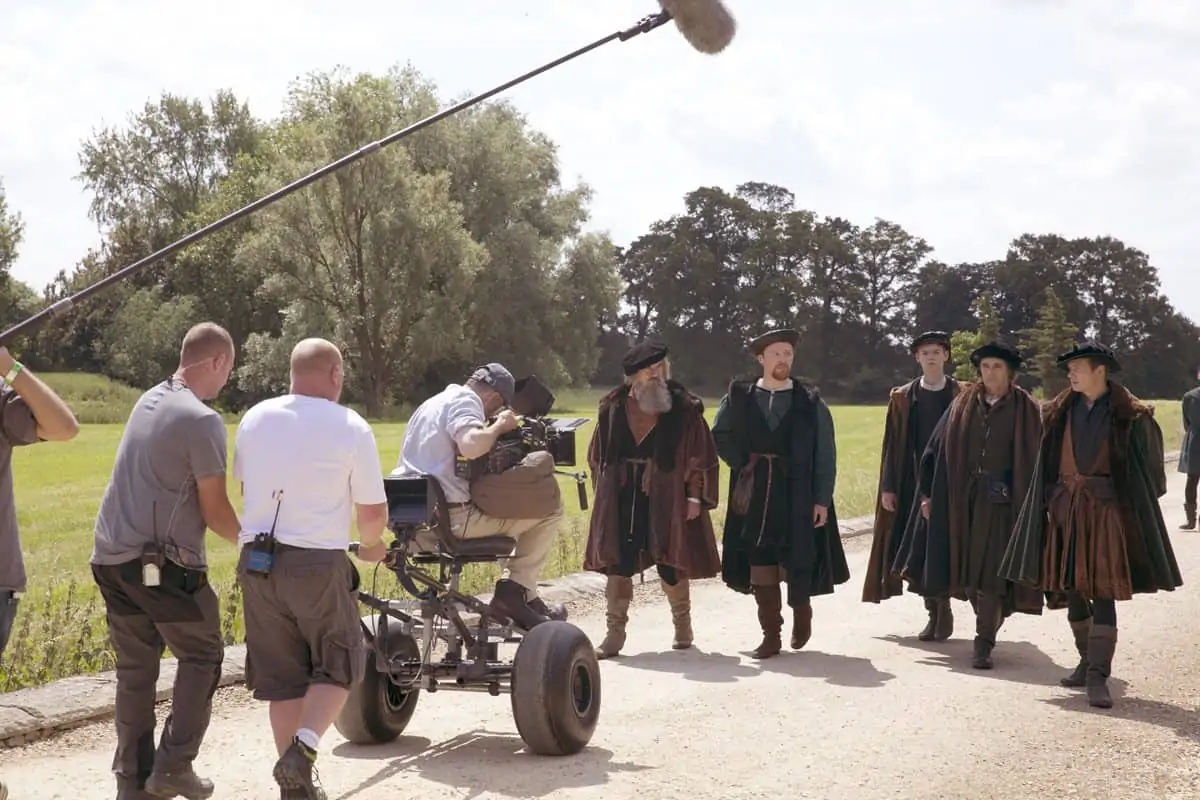
The pairing of the Alexa and Leicas allowed extensive use of candlelight during the night scenes. Finney thought this would "be good for the story and the style", while acknowledging it has been done to varying degrees before, perhaps most famously in Stanley Kubrick's Barry Lyndon, for which cinematographer John Alcott BSC used three 50mm f/0.7 still camera lenses, built by Zeiss for NASA satellite photography, to shoot with only candles for illumination.
"I did a lot of testing with candles to see what I could see and also what happened technically," Finney comments. "With very bright points of light you can get double reflections, halos and smears. You can get internal reflections off the actual sensor. There were aesthetic and mechanical considerations. If you walk into a room with 180 candles, what's going to happen?"
While candlelight was in keeping with the time Wolf Hall is set, it did bring practical difficulties. "We had to flag the moon off at night from our interior sets because the moonlight was too bright," Finney says. "I was actually getting shadows in this hall where Cromwell was walking across the floor carrying a single candle. It was very dark. You couldn't see. I've never gone darker. We had helpers bringing the actors on-set because, if we were blacked-out in daylight, they just couldn't see until their eyes were accustomed to the light."
Another problematic aspect was the meeting of historical accuracy, artistic intent and health and safety. Wolf Hall was shot entirely on location in buildings where either Cromwell and Henry themselves had walked and talked, or those of the same period filling in for understandably out-of-bounds premises such as The Tower of London.
"Naked flames were very tricky in negotiation," Finney agrees. "There is a bit of a contradiction because for 450 years people had been lighting candles and fires in those buildings and they're still there. All of a sudden, with 21st century worry, and you can see their point. There was a long process of showing them the sort of candles we were using, that they wouldn't produce too much smoke, and we had to have everything two metres from every wall and piece of furniture."
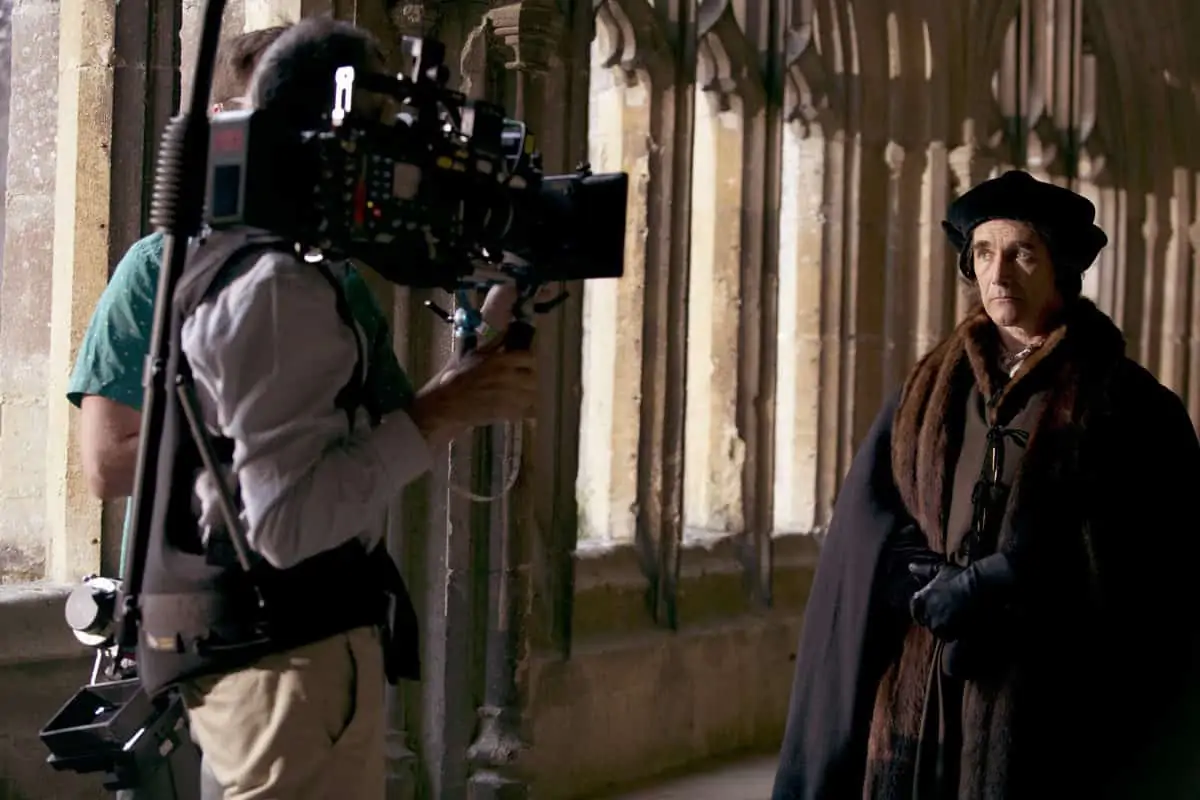
"The combination we liked best was the Alexa and the Leica Summilux-C Primes."
- Gavin Finney BSC
One scene in particular, when he read the script, left Finney thinking, "Oh my God, how am I going to do that?". As Cromwell sits alone in a room his sister-in-law Johane, played by Saskia Reeves, enters and begins snuffing out candles. "I thought, if my only lighting in the room is candlelight and she's turning them out, I'm stuffed. But it's amazing, it works. We're left with one candle in this big room next to Cromwell and a silhouette against the wall with him lit by candlelight. Everything focuses it down to him."
When some characters were too far from candles to be seen clearly, Finney did occasionally resort to artificial means, using either a Dedolight 150 full spot, turned down to 10 percent or less, on the dimmer, and small Kino Flos, which could be placed closer to fabrics. Daylight shots used what Finney describes as "the full gamut of equipment", with big 18 and 12ks shone through windows. Also on set were the new Kino Flo Celebs LEDs, which he says he likes because they are bi-colour, can be dialled from daylight to tungsten and dim down to 1%.
Outside lighting was the main user of hardware, but cranes were brought in on a few particular occasions as camera support.
"There's one scene at Catherine of Aragon's funeral where there's a very specific shot, where the camera cranes-in and overhead to her casket," Finney says. "And we used a crane a couple of times to get up to horse level. I didn't use a tripod until about the third week and that was only because we used the very long zoom, the 45/250, with a doubler. It's too heavy to handhold."
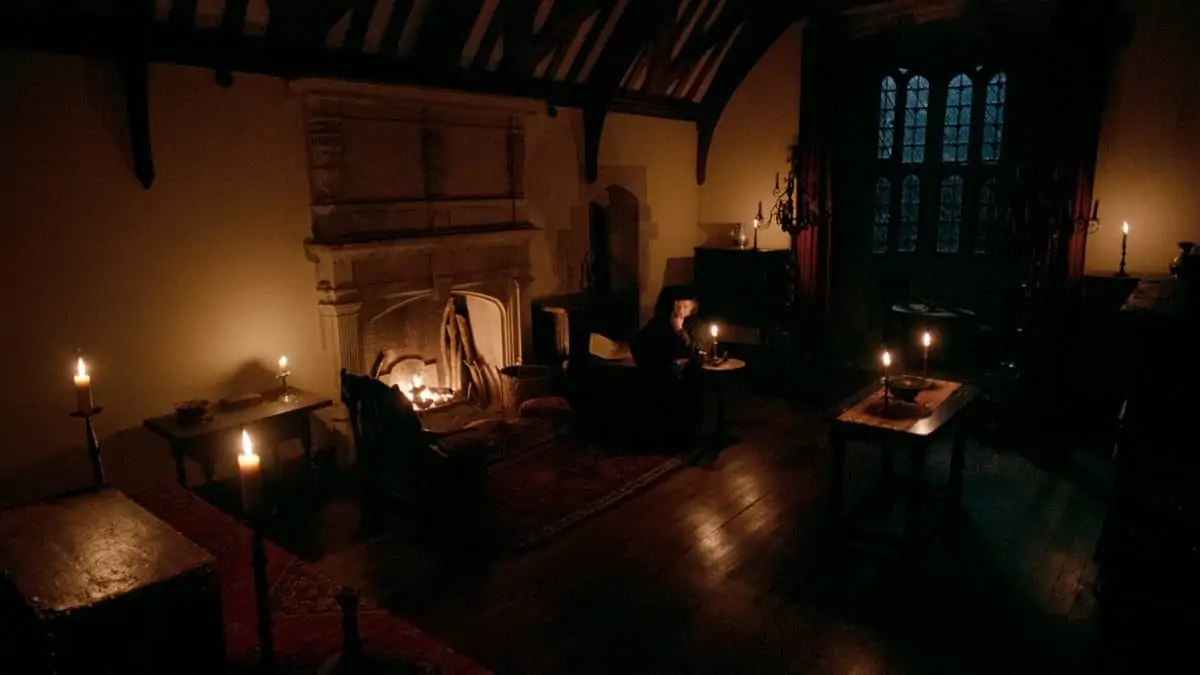
The TV version of Wolf Hall has attracted attention for its starry cast, and the promise of seeing Mantel's rich, heavily-researched novel brought to the screen. Technology has added to the expectation in making the candlelit world of Cromwell and Henry a reality but, as Finney concludes, the camera and lenses would have been nothing without the skill of those using them, paying particular tribute to focus puller Chris Reynolds.
"T1.4 handheld focus is insane, so you need a brilliant focus puller," he says. "I know four or five focus pullers in Europe who could do this job and he's one of them. As Peter said, theoretically with the Alexa and the Leica lenses you can do this, but without a crew that can handle it all, you can't really. So the crew were very much part of making it happen."

